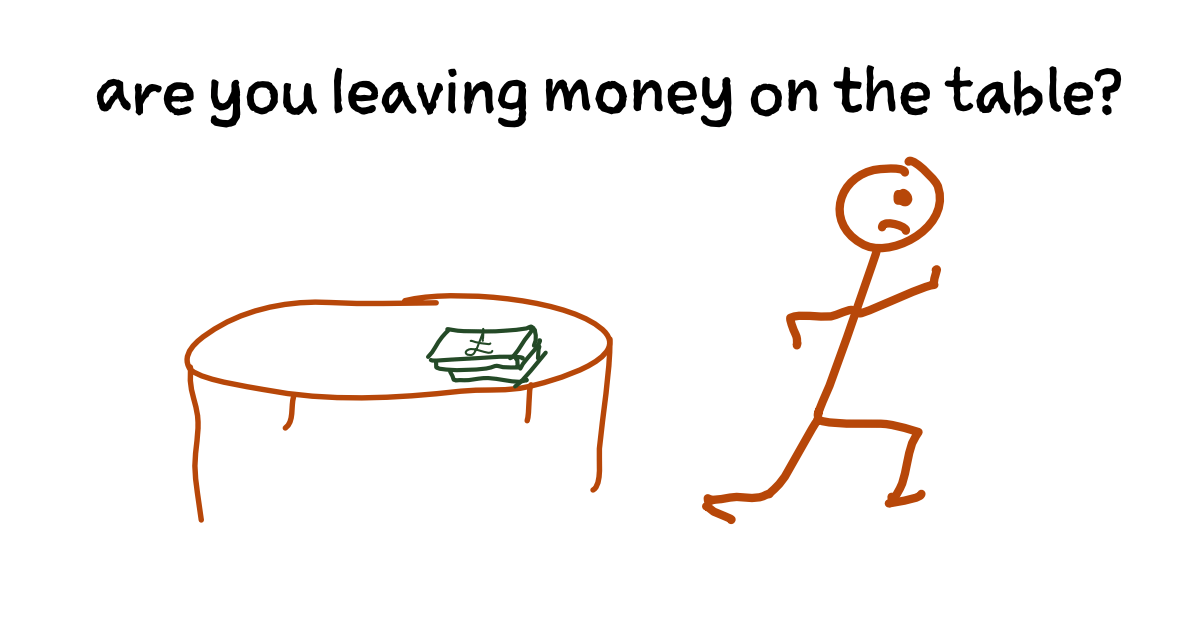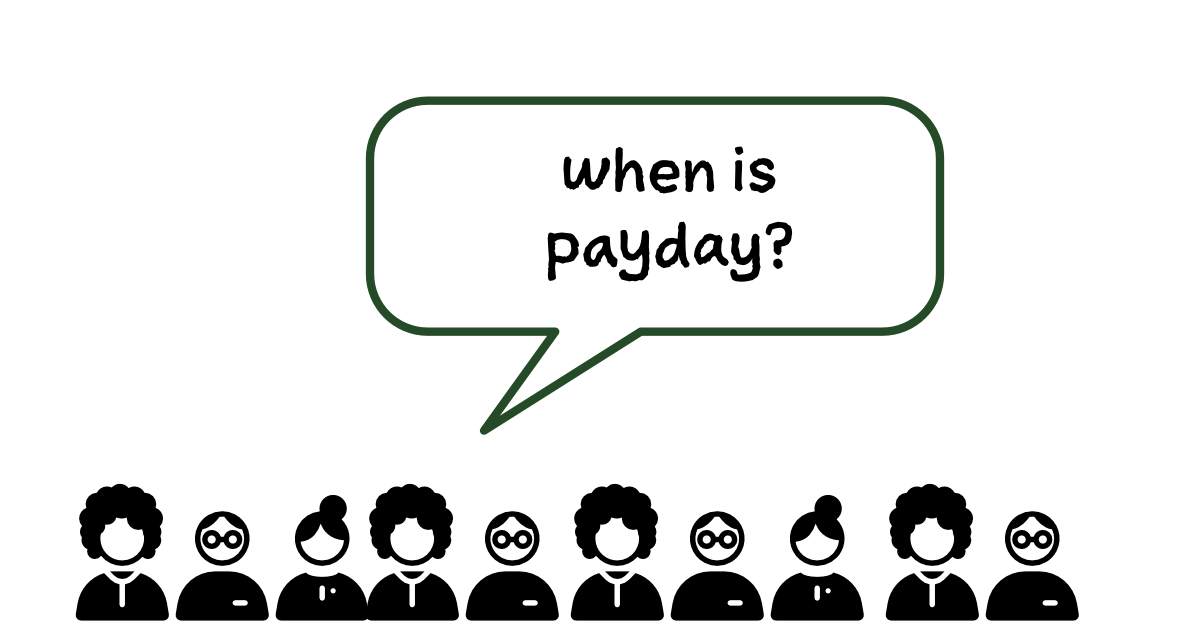My favourite business growth strategies for small businesses

You always have options.
You can choose from different growth strategies for your business. But you have to make a choice. Too many people just continue as they are, not committing to a clear future, yet at the same time, wanting to scale and grow.
Let’s see if this sums up your business right now
You’ve been running your business for a while now, and you’re the main person. Mostly, things have been going well. You’ve had a good take-up of your services and returning clients, and you’ve made okay money. You’re paying the bills, and you’ve gone past the point of matching your salary at the “proper job” you left long ago.
And you’ve already put in place some of the efficiency gains ways to grow. You’ve pushed your prices as far as you can (possibly because you read my Sweetspot Pricing book and followed the recommendations there on finding the right price and how to get people to pay it). You’ve already got a virtual assistant to take a lot of the admin off your hands and free you up to concentrate on your Zone of Genius activities. And, of course, you’ve been working on your productivity, setting up systems and processes to make sure you get the most out of each day.
You may even already have a couple of people working for you, and you want to get your thinking straight for the next stage of your business growth strategy.
You’re not 100% there yet, but who is?
And yet you know that what has got you to this point is not going to be what gets you to the next stage of growing your business. You need a different way of looking at this, a different strategy for growth.
Why this is the definitive article on growth strategies for small businesses
This article takes you through the different growth strategies for small businesses like yours. It might be a little different from some of the established thinking because most articles about growth strategies are dumbed-down MBA-lite nonsense. We need up-to-date thinking for smaller businesses like yours.
Can I urge you to decide on your plan?
I see so many business owners who have put off their plans to grow because of an inbuilt caution or because they think that growing necessarily means taking on lots of people. You’ll see soon that this is just one possible growth strategy which may or may not be right for you and your unique situation.
Why this is urgent
It’s very easy in life to continue what we’re already doing and drift along. But in business, there are consequences when you drift.
When you have the appetite for growth but fail to act, you’re leaving money on the table. Getting real with growing your business takes time. And the longer you leave it, the more money you’re losing. This is the ultimate opportunity cost, the foregone benefits of actions you fail to take. And ultimately, when you’re making choices in business, we see marginal utility between choices. The big gap is between making a choice and getting into action or just letting things ride.

In fact, by not making a choice, you’re not only leaving money on the table, but you’re also running the risk that you’ll get bored of your business, get worn out by the hamster wheel of doing the same thing over and over again for an ever decreasing reward or you’ll get burnt out from the stresses and strains of client work. By staying small, you won’t ever build up a business which can be sold, so you’ll continue working until you’re old. And then you’ll die.
Let’s avoid this sad story by choosing the right growth strategy for you. We’ll run through your three options.
The agency business model
The most obvious growth strategy for a small business is to grow your team – the agency business model.

When you’re fully booked and want others to help with the work, you add more people who can look after customers and do what you do. Most business owners I talk to get nervous about this because of the scary part when you have to pay them. You’re adding costs to your business, and somehow, this is counterintuitive when what you want to do is increase your profits. And, of course, this isn’t a one-off investment cost such as buying a new computer; this is the ongoing cost and potential cash flow headache of meeting the monthly payroll. And you feel responsible for these people. No one wants to be in the position of taking someone on and then not being able to afford them any more and having to let them go.

This conundrum of wanting to grow but being cautious of increased fixed costs plus the sense of being responsible for paying someone else’s mortgage (as well as your own) often means that founders shy away from employing people.
One version of the agency business model to avoid – expensive freelancers
Putting off the decision to adopt a growth strategy means that many companies get into the habit of using freelancers to do work for clients when they’re busy. Before you know it, those freelancers are working regularly for you and getting paid at a high rate. I regularly see companies where the owner is paying freelancers, say, £600 a day but billing them out at £800 per day. And the freelancers are working for the company regularly, putting you at risk of getting caught by HMRC because you’re contravening IR35. It feels like you’re making a profit, but at that kind of margin, the costs of doing business eat away at your tiny margin and you’re left with no money for you.
This expensive habit starts when you need the quick solution of getting clever, experienced people in because you need someone who doesn’t need any support or handholding; they can just get on with it. Which is great for a temporary situation but leads to headaches later on when you become reliant on them.
The smarter strategy
A smarter way to do this is to acknowledge that you’re going for the agency model growth strategy and look around for some intelligent, enthusiastic people who are not yet fully trained and not very experienced. In fact, ideally, you’re looking for people who are full of great qualities. They have all the basic ingredients you need to do your work, but they need your support, training and experience to be able to do the work for clients.
The even smarter way to do this is to find people who are slightly more marginal in the workforce. People who are returning to work after having children, folk who live in a different country with a lower cost of living. You don’t need a genius or someone better than you because you probably can’t afford them. Instead, consider hiring someone who needs more flexible hours. Or find a young person who’s eager to learn and teach them what they need to know.
Quick note – do check out small business growth strategy number two in the next section before you get going with this, as this is the super smart way to do this with productised services.
Is there a growth strategy for small businesses without all this hassle?
Our second growth strategy is to build super-efficient services using a productised services approach.
Full guide to productised services
Think about turning your services into a product before you take on staff or hire any more freelancers. This will make life so much easier for you.
What you need to do is work out the regular things you do for clients. What do they ask for most regularly? What’s at least part of your work process that you do for pretty much every client? You trim out all the extra fat, the bits you put in because one client asked for it or because you got bored and wanted to go deeper. You keep it simple and “stick to the knitting” of solving your clients’ problems.
And you put this together so it looks like a product for clients to buy and so that each time you do this for clients, you follow the same process. While you’re doing this, you might also develop a library of templates or frequently used parts, ways of automating parts of the process or scripts for others to follow.

Getting into productised services means that you straightaway begin to benefit from efficiency gains in your work. This means you can sell more, look after more clients and increase profits.
And, if you want to, you can then start to bring in other people to do at least some of the client work for you. You don’t need freelancers with years of experience because the way to do the work is spelt out for someone coming in to do it. You do still need to support and train someone, as you rarely get the best out of a person by giving them a manual and expecting them to get on with it, but that training and mentoring learning curve is so much faster this way.
I call this growth strategy of productising your services, getting someone else to do the work and then getting out of the way the Charlies Angels Business Model.
But what is my very favourite growth strategy for small businesses? The one where I sit on the edge of my seat and wriggle my toes with excitement when I see it?
Full productising growth strategy
If you want to seriously grow your business, develop it so it can be sold for a life-changing amount of money (or any amount of money), and you don’t want to spend the next ten years slowly building this up, you need to get into action fast on productising what you do. Even if you just want to build your turnover and profits higher and faster, I would plan and develop a full product ecosystem.
This is my favourite growth strategy, and when I see a small business owner who is ready to take this on, I get very excited. Especially as I’ve been down this route with so many people over the years and seen the satisfaction they get from building their client base, developing a business that is bigger and stronger than anything they could do on their own, and helping hundreds of clients. Plus, there’s more money too.
Let’s dig in.
The purpose of your business, no matter what you do, is to help your clients. To solve a particular set of problems for them. If you’re a business coach, your purpose is to help people build successful businesses. If you’re a copywriter, your job is to help your customers get their message across. And if you’re an environmental consultant, you are here to help clients reduce their negative impact on the planet.
And you will have a specific methodology for doing whatever it is that helps your clients, something you’ve worked out along the way. I call this your “magic” or your “superpower”.
My favourite growth strategy is when a small business owner takes the problem they solve for their customers and finds ways to do this through a number of interrelated products. Ideally, these are products that need little or no involvement from the business owner. What we want is an ecosystem of products, all for roughly the same kind of client focused on solving the same kind of problem and using the magic you’ve developed over the years.
Read the full product ecosystem article
You might have a mix of freebie lead magnets to attract and develop your audience, introductory products and productised services. Or you might have tons of free information products and a membership product. Everyone’s product ecosystem will be different.
This is my favourite growth strategy because:
It takes the business owner (you) out of the business
You’re probably familiar with the phrase “work on your business, not in your business” from Michael Gerber’s E-Myth books. The productising growth strategy takes this to the ultimate level. Once you’ve got going with this, you can work on the top-level areas of your business, do the work that you most love to do or focus on being the face of your brand. Or you can gradually withdraw your input, working only on top-level initiatives, checking the financials and the occasional bit of troubleshooting while you get the business ready for a sale.
It’s the most scaleable growth strategy for a small business
By including a substantial proportion of “stand-alone” products and productised services that employees can do instead of you, you increase the ratio of turnover to employees. In other words, you don’t need as many people to make as much money. This creates a much freer business. There’s more money in the business for investment in marketing, automation and training, so you build an ever-increasing loop of effectiveness. And, to be honest, the fewer employees you have, the faster you can go because you’re not caught up with staff management, recruiting new people or complex hierarchies. You can build a multi-million turnover business with less than a dozen people.
You can sell your company for more money
When you want to sell a small business, the amount you walk away with depends on several factors. Including many of the factors we’ve just been talking about:
When someone consults me about getting their business ready to sell, one of the first things I’ll look at is whether they have a balanced product ecosystem that includes recurring income or returning customers.
Once you’ve decided on the right growth strategy for you
If there’s one thing to take away from this article, it’s the idea that you need to make an active choice about the right strategy for you. Some founders will let their business plateau for years because they haven’t made this decision. Others book a one-off session with a fabulous business coach to help them decide and create their plan for action
Whether you come and talk to me or not, do make an active choice. And then…
Get your resources in the right order
I often think of the processes we need to follow in business as recipes. Just as in my favourite culinary recipe books, you’ll need a list of ingredients (resources and skills) plus instructions on what to do with them (your action plan).
If you’re going for the agency business model, you’ll need (in this order):
And if you’re going for the full pivot to products, you’ll need (in this order):
Feeling baffled by that last part?
Many people would love to fully productise because they can see all the advantages of this growth strategy. Of course, one of the advantages is that the productising route is the path least travelled – your competitors aren’t productising, so your business immediately stands out.
But this means that it’s harder to get your head around it. And that can mean that people give up; it’s just too bamboozling. I have to admit that it took me nearly a decade of missteps and false starts in my productising journey before things started to accelerate smoothly. I just didn’t have the right guidance in place. This is why I’ve put everything I wish I’d known about productising my business into a course, Pivot to Products, so you can afford all those mistakes I made.
Some more articles to reflect on your business
Here are a couple of blogs to help you constructively think about your business and reflect on how it’s doing.
How to get money into your business
How To Spot A Gap In The Market
